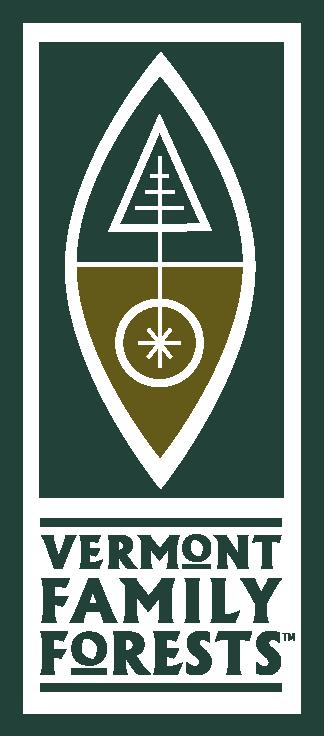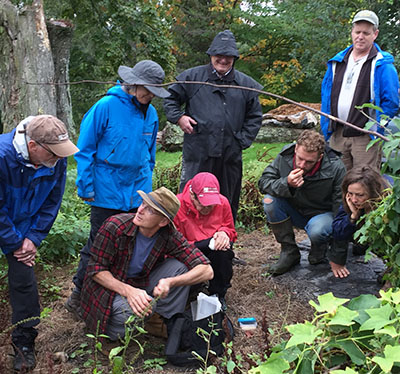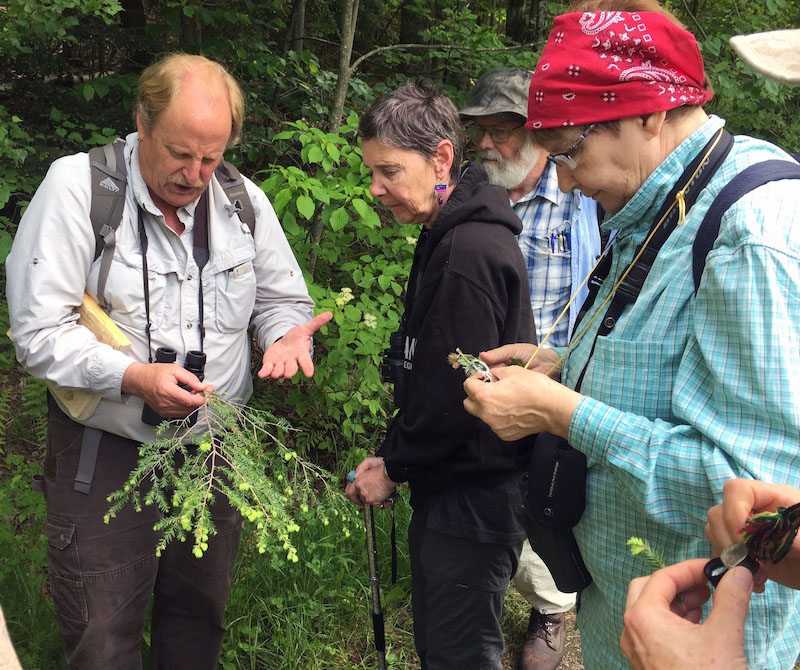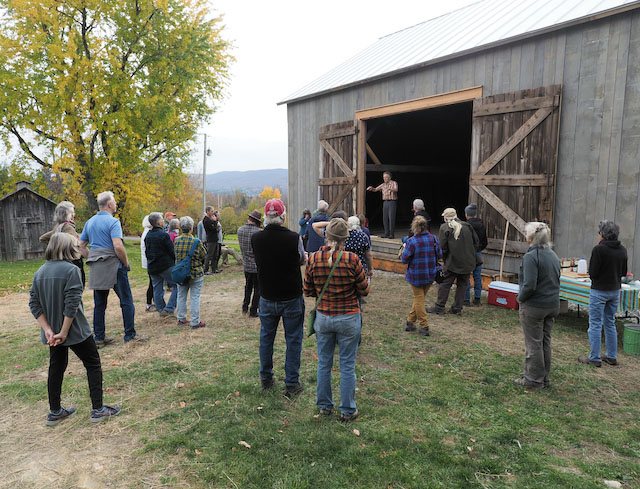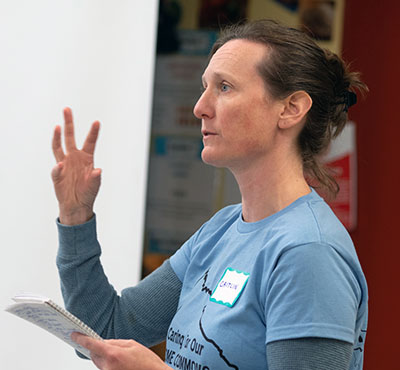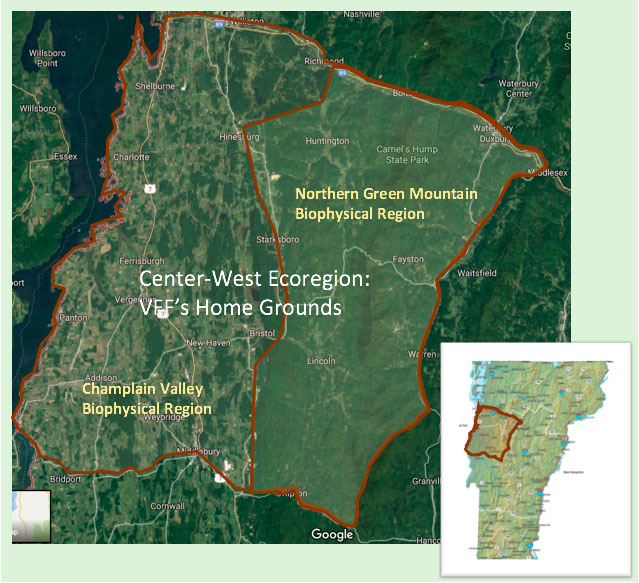
Family Forest Conservationist Training, Spring 2026
New pilot training program for forest landowners
For 30 years, VFF has aimed to help people who own private forestlands—what we call family forests—access the information they need to maintain or improve the health of the forest community while moving toward their ownership objectives for the land. We’ve shared many resources—from workshops on planning and constructing great forest access paths to loaning tools for uprooting invasive woody plants to written guidance like our VFF Organic Forest Ecosystem Conservation Checklist.
Now we’re bring many of those elements together into a single training program, which we’re calling the Family Forest Conservationist Training. Inspired by the Master Gardening and Master Naturalist trainings, we’ve created a 6-session course in which participants will learn 10 core practices for assessing forest health, using a low-cost, low-tech toolkit they receive at the start of the training program. The course will be forest-based, hands-on, dynamic, soulful, and fun.
By the end of the course, participants should be able to:
- Assess tree species diversity and identify natural communities within their forest,
- Identify and assess the abundance of non-native woody species,
- Assess the presence and abundance of essential forest structure, including legacy trees, snag and cavity trees, large downed wood, and small woody debris,
- Assess the presence and quality of vegetative buffers around special habitats (caves, beaver meadows, vernal pools, spring seeps, rare natural communities, and such) and around stream corridors,
- Evaluate the forest access network (roads and paths) to understand overall road abundance, slope, and quality and abundance of erosion control structures, and
- Identify ways to address any issues they discover with any of the elements of forest health mentioned above.
Instructor(s)
VFF Executive Director and Conservation Forester David Brynn will guide this hands-on, lands-on exploration of forest health. He’ll work with guest instructors for each session, including other VFF staff and local experts.
Time commitment
- The course will include six ½-day sessions, on Sundays from 10-2:30. We hope that students will attend all 6 sessions of the training program, but if you’re not able to attend one of the sessions, that’s not a problem—just let us know.
- Participants will be expected to read selected texts prior to each class.
- In between sessions, students will be expected to practice the skills they learned in the previous session in their own forest and bring their findings to the next session.
- Students will create a small final presentation about what they’ve learned about their forest (in whatever creative form they choose) to share with fellow participants.
Course dates:
| Date | Session | Focus |
| April 26, 2026 | Getting started—Exploring forest health | In this first session, participants will be introduced to the course structure, and to the practice of assessing forest health. They’ll become acquainted with their Family Forest Health Check Toolkit, with which they can complete their investigations of forest health. |
| May 3, 2026 | Forest biological diversity | Students will investigate and assess the native biological diversity of forest trees and identify non-native invasive woody plants. The plant-identification learning process will be part of all remaining training sessions. |
| May 17, 2026 | Forest structural diversity | Students will use variable area point sampling to assess structural diversity, legacy trees, snag and cavity trees, and large downed wood. |
| May 31, 2026 | Forest access paths & roads | Students will assess the quality of existing access paths to determine whether they have adequate erosion control structures and will learn the basics of constructing ecologically sound access roads and stream crossings. |
| June 14, 2026 | Surface waters & special habitats | Students will identify and assess the health of vegetated buffers to streams and special habitats (including vernal pools, seeps, cliffs, caves, talus slopes, beaver meadows, and rare natural communities). |
| June 28, 2026 | Bringing it all together | In this final day of training, we’ll look at the health assessments we’ve done over the past 5 sessions to get an overall picture of forest health and to explore ideas for responding to assessment results that indicate issues affecting forest health. Students will share whatever project they’ve undertaken in their own forest. |
Cost
While similar training programs understandably cost quite a bit, we are offering this pilot program of the Family Forest Conservationist Training free of charge. Participants in this pilot will help us work out the kinks and fine-tune the training course. You’ll receive and test our Family Forest Conservationist Tool Kit and Family Forest Health Check guidebook. We are looking for students who are ready to dive in, share, listen, explore, learn, think outside the box, have fun, and be willing to try new things.
Location
Though session sites will vary, the course will be based in Bristol and Lincoln.
Number of Students
We plan to cap enrollment at 12 students.
How to Enroll
If you love the idea of learning skills to assess and contribute to your forest’s health and are interested in cultivating mutually beneficial relationship with your forest, and if you’d like to take an active part in this pilot training course, then send us an email at info@familyforests.org.
